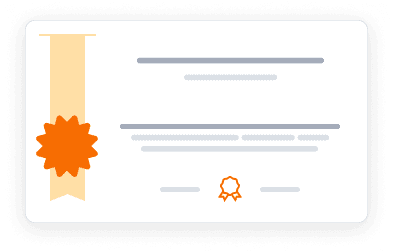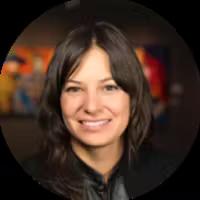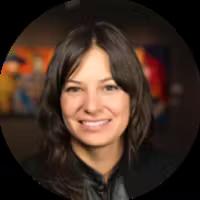Explore sound in art & society. Learn from experts on acoustic phenomena, sonic experimentation & musical traditions.
Explore sound in art & society. Learn from experts on acoustic phenomena, sonic experimentation & musical traditions.
This course, designed by artist Pedro Lasch and composer Mathias Hinke, explores sound in art and society. Co-taught by musician Jace Clayton and curator Candice Hopkins, it covers major artistic developments in sound, linking them to wider social and spatial contexts. Students learn about diverse musical traditions, sonic experimentation, and acoustic phenomena in everyday life. The course includes guest presentations from key thinkers and practitioners, offering insights into various aspects of sound art and experimentation. While no prior sound production experience is required, the course offers challenging options for advanced learners. It encourages treating the MOOC as a public art medium through optional practical components, local project productions, and global exchanges.
4.7
(121 ratings)
17,587 already enrolled
Instructors:
English
What you'll learn
Understand the relationship between public art and spatial politics
Analyze the role of socially engaged art in addressing urban and social issues
Explore the use of media, institutions, and organizations as artistic forms
Examine experimental approaches to education in the context of art
Develop critical thinking skills in analyzing public art interventions
Gain insights from leading practitioners in the field of public art
Skills you'll gain
This course includes:
210 Minutes PreRecorded video
9 assignments
Access on Mobile, Tablet, Desktop
FullTime access
Shareable certificate
Get a Completion Certificate
Share your certificate with prospective employers and your professional network on LinkedIn.
Created by
Provided by

Top companies offer this course to their employees
Top companies provide this course to enhance their employees' skills, ensuring they excel in handling complex projects and drive organizational success.





There are 8 modules in this course
This course provides a comprehensive exploration of contemporary public art and experimental pedagogy. Students will examine how artists engage with spatial politics, social structures, and educational practices to create impactful public works. The curriculum covers key topics such as the relationship between art and urbanism, the use of media as social form, the creation of alternative institutions, and the development of experimental educational models. Through a combination of lectures, guest presentations, and optional practical projects, learners will gain insights into the theories and practices that shape socially engaged art. The course emphasizes critical thinking and encourages students to consider the MOOC itself as a form of public art, fostering a global community of learners and practitioners.
Introduction & Analytical Concepts
Module 1 · 1 Hours to complete
Elements of Sound and Social Practices
Module 2 · 2 Hours to complete
Project: Playing with Sound Rules
Module 3 · 41 Minutes to complete
NOTATION, HOW MUSIC TRAVELS & PUBLIC SPACE
Module 4 · 1 Hours to complete
Project: Erase the Sound of a Space
Module 5 · 42 Minutes to complete
LISTENING AS PRACTICE, GLOBAL FORMS & THE SOUND OF THE NET
Module 6 · 2 Hours to complete
Project: Experiment with Failure
Module 7 · 44 Minutes to complete
Open Project
Module 8 · 42 Minutes to complete
Fee Structure
Payment options
Financial Aid
Instructors
Visual Artist and Associate Research Professor
Pedro Lasch, born and raised in Mexico City, splits his time between North Carolina, where he has been teaching at Duke University since 2002, and New York, where he collaborates on projects with immigrant communities and art collectives like 16 Beaver Group, which he has been involved with since 1999. His solo exhibitions include *Open Routines* (Queens Museum of Art, 2006), *Black Mirror* (Nasher Museum of Art, 2008), and *Abstract Nationalism* (The Phillips Collection, 2014), while his work has been featured in group exhibitions at prestigious venues such as MoMA PS1, MASS MoCA, Walker Art Center, CAC New Orleans (USA); Royal College of Art, Hayward Gallery, Baltic (UK); Centro Nacional de las Artes, MUAC, Galería de Palacio Nacional (Mexico); as well as international platforms like the Gwangju Biennial (South Korea), 12th Havana Biennial (Cuba), Documenta 13 / AND AND AND (Germany), and the 56th Venice Biennale / Creative Time Summit (Italy). Author of three books, his art and writings have appeared in collections, journals, and publications including *October Magazine*, *Saber Ver*, *Art Forum*, *ARTnews*, *Cultural Studies*, and *Rethinking Marxism*, alongside international media outlets such as *The New York Times*, *The Philadelphia Weekly*, *El Universal*, and *La Jornada*.
Documenta 14 Curator, Producer, and Author
Candice Hopkins is a curator for documenta 14 and a member of the Carcross/Tagish First Nation in Yukon, Canada. Her writings have appeared in publications such as MIT Press, BlackDog Publishing, Revolver Press, New York University, The Fillip Review, Canadian Art Magazine, and the National Museum of the American Indian. She has delivered lectures at prominent venues including Witte de With, Tate Modern, Dak’Art Biennale, Artists Space, Tate Britain, and the University of British Columbia.
Testimonials
Testimonials and success stories are a testament to the quality of this program and its impact on your career and learning journey. Be the first to help others make an informed decision by sharing your review of the course.
Frequently asked questions
Below are some of the most commonly asked questions about this course. We aim to provide clear and concise answers to help you better understand the course content, structure, and any other relevant information. If you have any additional questions or if your question is not listed here, please don't hesitate to reach out to our support team for further assistance.





